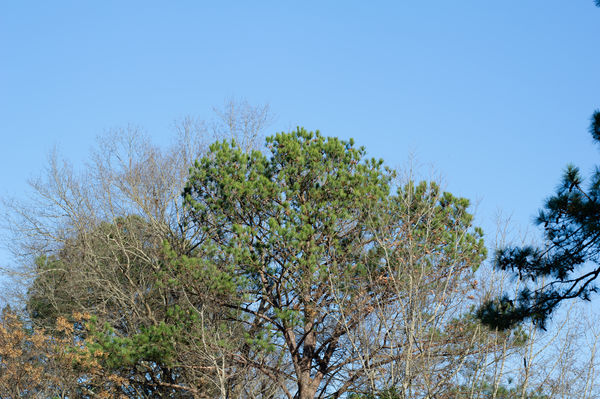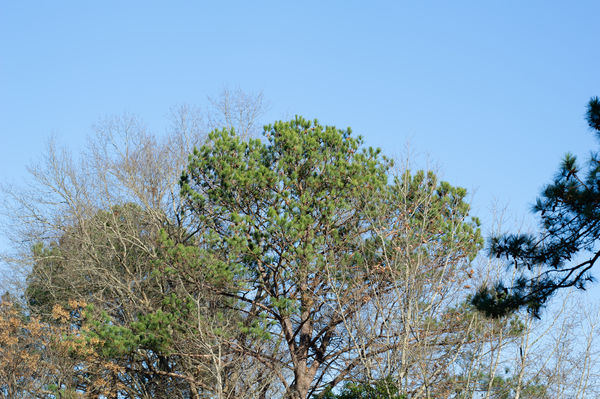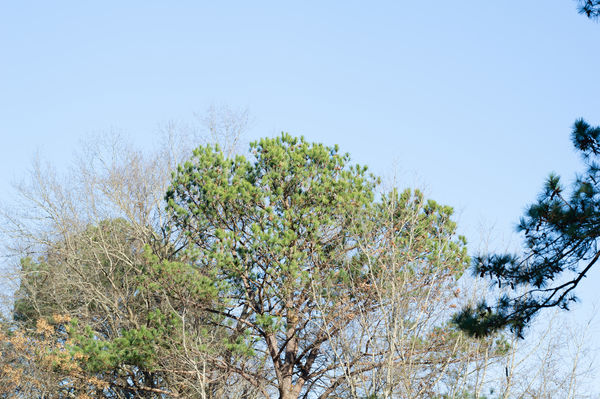How to deal with sky over exposing?
Jan 5, 2019 14:19:29 #
What you can hope to acheive in PP depends on whether sufficient detail exists in the both 'over' & 'under' exposed areas. Mt trick is to import the image into my iPad and run it through PS Express (an app of image management pre-sets) using the Enhance tool - if detail appears then PP holds some promise.
Jan 5, 2019 15:29:47 #
In the developing room with actual photo paper and enlarger couldn't you shade one area more than another area with a piece of cardboard or cheese cloth. I talking old school
Jan 5, 2019 15:31:21 #
spaceytracey
Loc: East Glacier Park, MT
hobbit123 wrote:
Probably a fairly basic question but whenever I take a shot that includes some sky it's always over exposed. The physics seem pretty simple, either the sky is exposed correctly (and the other stuff appears under exposed) or vice versa. I can't see how you can have a happy medium.
Am I missing something? Or do you correct in post?
Thanks
Am I missing something? Or do you correct in post?
Thanks
Try metering off the sky, hold, then lower your camera/view & shoot the scene.
Jan 5, 2019 15:33:50 #
This was called dodging and burning, and like PP today, some was done on almost every print.
... Cam
... Cam
Beemerrt wrote:
In the developing room with actual photo paper and enlarger couldn't you shade one area more than another area with a piece of cardboard or cheese cloth. I talking old school
Jan 5, 2019 15:44:14 #
Beemerrt wrote:
In the developing room with actual photo paper and enlarger couldn't you shade one area more than another area with a piece of cardboard or cheese cloth. I talking old school
Did it all the time. It's called "dodging."
Jan 5, 2019 15:53:13 #
Beemerrt wrote:
In the developing room with actual photo paper and enlarger couldn't you shade one area more than another area with a piece of cardboard or cheese cloth. I talking old school
But with negatives, you could never recover shadows that were never recorded. With positive materials and with digital, it is the highlights that risk not being recorded when there is overexposure. You can still dodge and burn in post processing, in a process similar to the old school methods.
I like old school.

.
Jan 5, 2019 16:03:28 #
bcplimpton wrote:
Finally someone mentioned the graduated Neutral density filter, the must have extra for every landscape photographer.
Why?
How would it help me here?
It wouldn't take me more than 2 minutes to pull 100 examples of landscapes where GNDs would have no value. I gave away the ones I used to have. It's a hold-over from the days of film, where it was easier to fudge a darker sky using a GND than it was to use burning during the printing process.
I know there are many situations when a GND can work, but for me, most of my landscape or other images that include a great deal of sky are rarely ones that have clear, unobstructed horizons. In these cases GNDs are about as useful as teats on a bull. . .
Jan 5, 2019 16:04:58 #
hobbit123 wrote:
Probably a fairly basic question but whenever I take a shot that includes some sky it's always over exposed. The physics seem pretty simple, either the sky is exposed correctly (and the other stuff appears under exposed) or vice versa. I can't see how you can have a happy medium.
Am I missing something? Or do you correct in post?
Thanks
Am I missing something? Or do you correct in post?
Thanks
This afternoon, we finally had a blue sky, so I took advantage of this to evaluate different metering modes for determining sky exposure. Attached are 3 files showing a blue sky with a green tree providing some subject material. Each of the 3 exposures were at either matrix metering, center weighted metering, or spot metering. All images were shot raw and are straight out of the camera, with no processing other than LR conversion to jpg for this post. So you can be the judge as to which meter method you prefer. It could be possible that each of these images could be PP to be identical jpg images, but that was not the intent of this post. I wanted to show that spot metering is more likely to give you a much brighter sky than center or matrix metering will. So I might not want to use spot metering all the time.
Jan 5, 2019 16:07:54 #
tomcat wrote:
This afternoon, we finally had a blue sky, so I to... (show quote)
What did you measure with the spot?
Jan 5, 2019 16:09:49 #
John_F wrote:
What you can hope to acheive in PP depends on whether sufficient detail exists in the both 'over' & 'under' exposed areas. Mt trick is to import the image into my iPad and run it through PS Express (an app of image management pre-sets) using the Enhance tool - if detail appears then PP holds some promise.
Does that mean I can't make a silk purse out of sow's ear? Dang.

Jan 5, 2019 16:14:31 #
Gene51 wrote:
Why? br br How would it help me here? br br It w... (show quote)
The problem in that photo of of the scuplture is very diffuse lighting (overcase day).
The solution is to wait for the sun to break though the overcase, or use a
very bright, raking flash. It needs some shadows to bring out the detail in
the subject, and make it "pop" away from the background (the clouds).
(Every notice all the lights on a movie set? Or all the lights and reflectors
on location? Think they would spend all that money if they could just
"fix it post production" instead?)
Jan 5, 2019 16:21:38 #
What I have done is expose for the sky (or close) and use a fill flash for the subject. This only works when you are close enough to the subject that a flash will do the trick.
Jan 5, 2019 16:28:21 #
tomcat wrote:
This afternoon, we finally had a blue sky, so I to... (show quote)
Matrix metering should have worked the best.
But there be more contast between the bright sky and that dark branch
in the foreground than your camera's sensor can capture.
If you spot meter both the sky and the branch with a real spot meter,
you can find out. EVsky - EVbranch = stops of contrast.
If it doesn't exceed the dynamic range of your sensor, then the best
bet is to underexpose the branch, and try to recover the detail in
processsing. There are usually more tones in "black" than you can
see with the naked eye.
Meter the sky and the branch, split the difference, then underexpose
by about 1 stop. In processing, try reducing global contrast. If that looks
too washed out, then instead try local lightening of the branch (dodging).
Alternatively, you could decide to let the branch go to pure black,
and expose for the sky and trees. That's probably what I would do.
But this would have been a perfect place to use a polarizing filter--
I'd try that first.
Jan 5, 2019 16:30:50 #
Gene51 wrote:
What did you measure with the spot?
I kept the focus target at the same position for all 3 shots. I measured the light reflecting off of the tree with the spot metering mode. I did not want to use the sky as the basis for exposure determination with the spot metering mode because most folks will meter the subject (like I did here) and not the sky when they are taking a photo. Not everyone thinks to meter the sky when there is a subject in front of it. It was my intent to show that if you spot meter the subject, rather than the sky, then the sky will be/could be too bright if the subject is darker or has a lower absorption than the sky.
Jan 5, 2019 16:43:08 #
Bipod wrote:
Matrix metering should have worked the best. br b... (show quote)
You are "spot-on"....no pun intended. But what I was trying to do here was not take a perfect photo, but to show that if you spot meter a subject against a bright sky, there is a possibility of overexposing the sky. If I was doing this for real, I would have slapped my Singh-Ray LB Color Combo Polarizing filter on the lens.
If you want to reply, then register here. Registration is free and your account is created instantly, so you can post right away.









